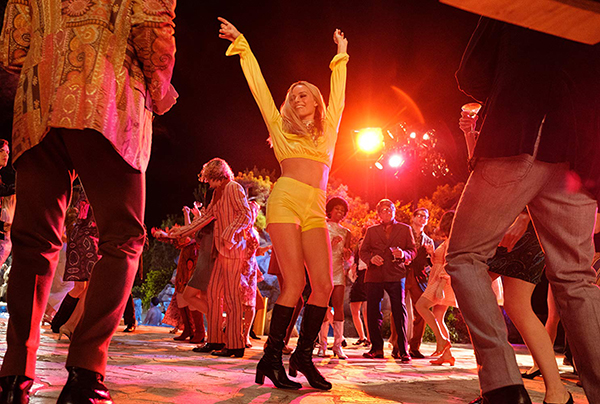Mr. Tarantino is back, and he’s brought cowboys, pitbulls, crazy cult members and — of course — more feet.
Acclaimed film director Quentin Tarantino has finished his ninth feature film, “Once Upon a Time … in Hollywood.” The film follows rising actor Rick Dalton (Leonardo DiCaprio) and his brother-like stunt double Cliff Booth (Brad Pitt) as they navigate the tricky waters of 1969 Hollywood, all while the sinister plan of real-life criminal Charles Manson ruminates in the shadows. Tarantino artistically directs this deep dive into a magical era of cinema, and creates a wild, colorful cast of characters to play around in it.
“Hollywood” boasts an impressive cast featuring some of the most popular actors working in the industry today.
Dalton’s easygoing yet unhinged attitude is on perfect display as DiCaprio embodies his character. He also does a great job acting in a film as a character who is acting in a film.
Pitt emphasizes Booth’s self-sufficient and brutish personality with a strong performance. The dry comedic banter between the duo is one of the strongest aspects of the film.
The main cast is rounded out by a glowing Margot Robbie, who plays real-life Hollywood movie star Sharon Tate. Robbie portrays Tate with an irresistible charm, creating a beautiful tribute to the woman who tragically lost her life to the Manson Family.
The cinematography is finely tuned, with various framed shots smoothly transitioning to different angles and sizes. The neon lights of Los Angeles perfectly contrast with the beautiful countryside that surrounds Western movie sets, establishing a mesmerizing atmosphere. Fast-moving visuals such as speeding cars are masterfully tracked and focused on in order to bring audiences along for the ride.
In addition to the sleek cinematography, “Hollywood” fully embraces its atmosphere with a soundtrack loaded with classic tunes including “Good Thing” by Paul Revere & the Raiders and “California Dreamin’” by José Feliciano. The songs are appropriately used to enhance certain sequences, adding an additional flair of classic Hollywood. Tarantino intentionally does not place music tracks during tense or grounded scenes in order to establish a sense of suspense or realism.
The narrative scope of the film is a bit unfocused. Rather than emphasizing a clear structured beginning, middle and end, “Hollywood” is a bit of an observatory piece in which audiences follow three unique individuals in 1969 Hollywood. Everything is tied together with a nice little bow at the end, but the journey there can feel a bit overextended and sometimes unnecessary.
Regardless, the bizarre, comedic and sometimes-scary elements of the story only add to the world Tarantino has created. The slow buildup of the film’s world and characters is certainly worth the wait for the incredible and cathartic finish.
“Once Upon a Time … in Hollywood” is another fantastic entry into the ever-growing catalog of films written and directed by Quentin Tarantino. “Hollywood” explores and twists history in order to tell a complex story about the dark underbelly of the golden age of filmmaking.





















